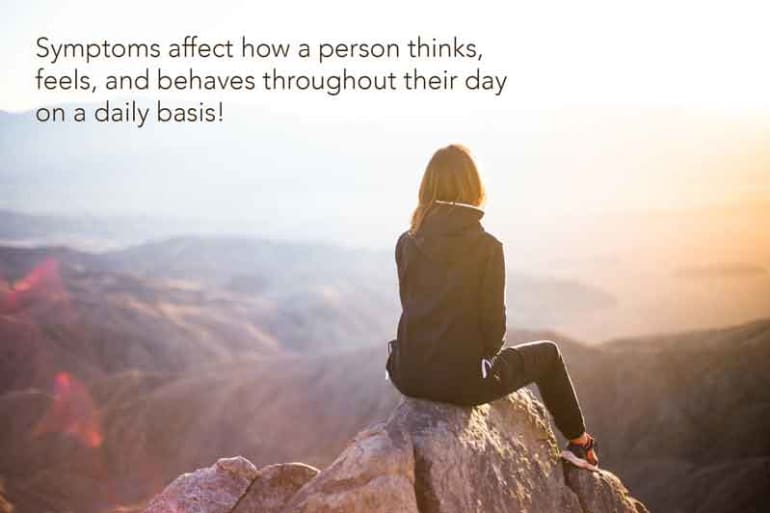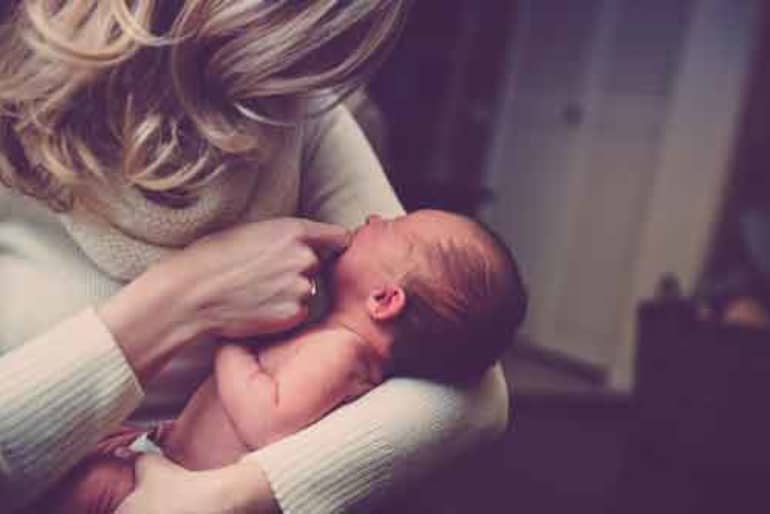Everyone goes through difficult times but there is a big difference between feeling down and living with clinical depression. Most people come out of their funky mood on their own. It’s not as easy for those with a real depression diagnosis. How do you know when someone passes from general depression into clinical depression?
Clinical depression, or major depressive disorder, impacts about 7.1 percent of the population ages 18 and older in the United States. Between 20 and 25 percent experience it at some point in their life. It’s more than feeling sad or down; depression affects every aspect of a person’s life. It is treatable but requires intervention and consistent work for treatment to stay effective.

Do you worry someone you know might struggle with depression? There are various signs to keep an eye out for that will help you decide whether or not they should seek treatment. Continue reading to learn more about general depression, clinical depression, and how to find help.
Differences Between Clinical Depression and General Depression
General Depression
Maybe you know someone going through a challenging time in their life right now. Things might be difficult at home. Maybe their workload at the office is more demanding than usual. Perhaps they recently experienced a loss in their family. All of these situations would give anyone a reason to feel down or stressed out.
People who show signs of depression during these times experience what some call general depression or situational depression. This type of depression is short-term and affects people who experienced a recent trauma or dramatic change in their life. Their feelings are a response to difficulties in adjusting to the new situation. Symptoms include:
- Feeling down or indifferent to what’s going on around them
- Having a general feeling of anxiety or worry
- Overwhelming feelings of hopelessness or sadness
- Challenges with focusing, concentrating or paying attention
- Difficulties falling asleep or staying asleep
- Withdrawing from friends or family, or from activities they enjoy
It’s important to remember that their depressed mood and feelings are no less “real” than any other type of depression. They often have similar symptoms but their symptoms lessen over time, often without the need for intensive treatment.

What is Clinical Depression?
If that person seems down regardless of what’s going on in their life, though, there might be something else going on. Clinical depression, also called major depressive disorder, is more severe than a general depression. Symptoms don’t lessen over time and usually aren’t a result of a single event; they persist regardless of what’s going on.
The symptoms of depression are similar to those seen in someone with situational depression. Their symptoms are more intense, do not go away with time, and often require professional intervention to treat. Signs of clinical depression seen in these individuals include:
- Constant or near-constant depressed mood or irritability
- Noticeable loss or lack of interest in activities
- Drastic weight loss or weight gain
- Decrease or increase in usual appetite
- Sleeping noticeably more or less than usual
- Tiredness, exhaustion, or loss of energy
- Feeling worthless or guilty for no reason
- Having difficulties making decisions
- Troubles with concentrating or focusing
- Experiencing suicidal thoughts or ideations, or attempting suicide
Symptoms affect how a person thinks, feels, and behaves throughout their day on a daily basis. Their symptoms must last at least two weeks in order for them to be diagnosed with clinical depression. Additionally, there are a few different types of depression that develop under different circumstances.

Seasonal Affective Disorder
Seasonal affective disorder (or SAD) refers to the onset of depression symptoms during the winter months. It often results from less natural sunlight and longer periods of darkness each day. Withdrawing from social activities, increased sleep, and weight gain are common symptoms of SAD.
People with SAD tend to notice their symptoms tend to disappear as spring and summer come around. This causes some people to confuse seasonal affective disorder for situational depression. The difference is that symptoms of seasonal affective disorder return every year.
Postpartum Depression
Many women experience the “baby blues”, mild anxiety and depression, after having their baby. Postpartum depression is different, though, and refers to women who develop full-fledged depression. Their symptoms usually include exhaustion, listlessness, and extreme anxiety and sadness. These symptoms often interfere with their ability to care for their newborn child.

Psychotic Depression
People with psychotic depression experience symptoms of psychosis alongside their symptoms of depression. Psychosis is a different diagnosis that describes deeply held but false patterns of belief about the world. These individuals experience delusions and paranoia, as well as visual, auditory, or tactile hallucinations.
Persistent Depressive Disorder
Someone with persistent depressive disorder has symptoms of depression that last more than two years. Their episodes of major depressive disorder may be less severe during certain periods of time but severe symptoms always return. These cycles of severe and less severe symptoms of depression must last at least two years for a PDD diagnosis.
Bipolar Depression
Bipolar depression is slightly different from the other types of depression listed above. People with bipolar disorder experience cycles of manic episodes and depressive episodes. Bipolar depression describes those periods of time when someone with bipolar sinks into a depressive episode. Their symptoms are similar to those seen in people with clinical depression.
Why You Should Seek Help
It’s difficult to live daily life when you’re constantly down and depressed. It affects nearly every aspect of your life from the moment you wake up until the moment you go to sleep. Living in a regular state of depression often puts you at a greater risk of developing other disorders. If you don’t address your depression it might also worsen over time.

How can you find help? Various types of treatment exist for those living with clinical depression. Oftentimes people can see improvement through the use of medication and therapy. Some have more severe symptoms, though, and benefit from inpatient treatment at a facility like Hawaii Island Recovery.
Do you want to learn more about inpatient treatment for clinical depression? Call us at 877-721-3556 to speak with someone who can outline the programs we offer. Take the first step towards getting help today!
 Hawaii Island Recovery
Hawaii Island Recovery 










